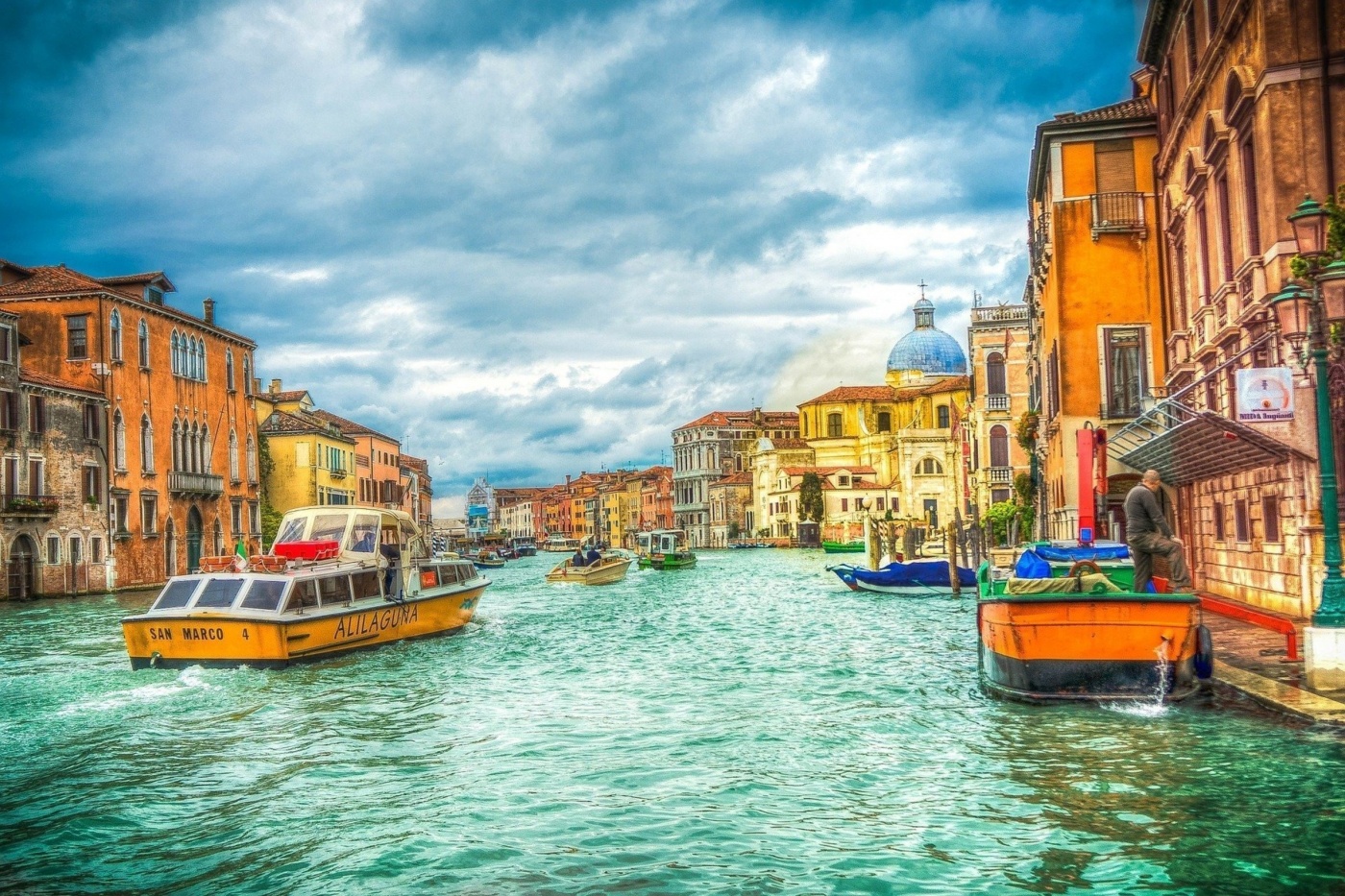Venice! It is a miracle, this city rising from the sea, a blinding composition of fantastic architecture. Venice that became the character of the novel “Death in Venice” by the German classic writer Thomas Mann is a flattering and suspicious beauty, either a fairy tale or a trap for strangers.
In 1911, the author of the short story came to recreate himself on the Lido Island, next to Venice, where his work was born. In the story, his hero, the aging writer Gustav von Aschenbach, comes to Lido, where he falls in love with a beautiful young man and, unable to withstand the passion that burns him, dies of Asian cholera. The short story entered the treasury of world literature not only as a psychological insight into the theme of beauty, love and creation, but also as one of the best descriptions of Italian Venice.


Today, having come here by a ferryboat from the pedestrian-gondola Venice, you find yourself again in a ‘normal’ city - there is automobile traffic with all the attributes: exhausts, car horns, bus stops, traffic jams, paid parking lots and so on. True, this ‘megalopolis’ in the shape of a stick is only 13 km long and 400 meters wide.
The hero of Thomas Mann would travel endlessly, following his love, between Lido and Venice by vaporetto - riverboat buses, the journey from the island to the city takes 20 minutes. The first vaporetto appeared in Venice back in 1881. The guests of the Venice International Film Festival that has been held here since 1932 arrive at the Lido pier by vaporetto.
Once a year, in the last days of August and the first days of September, Lido basks in glory and lives in a blaze of global publicity. By the way, this is the oldest film festival. When the fireworks are no longer reflected in the waters of the Venetian lagoon and the Adriatic Sea, there is a usual tourist routine on the Lido Island.
Having landed on the Lido Island, the hero of "Death in Venice" went along a white flowered alley with taverns, benches and boarding houses on both sides, the alley crossed the island and went down to the sea. The hotel where the character of “Death in Venice” stayed is not named in the short story, but it is said that it is located next to Hotel Excelsior, so the readers have guessed at once - it's about the luxurious Grand Hotel de Bains. In 1971, Visconti made his film "Death in Venice", it is also shown in the film "The English Patient". Mann described it and the main feature of the hotel is clearly heard - the discordant noise of the restaurant. The restrained multilingual noise of the tourists from different countries; even now, in Lido and Venice there are much more visitors from around the world than the local people.

The terrible weather of the first days often hanging over Venice (the sun through dense clouds, heat, coastal wind), almost drove Mann’s Aschenbach from these places. The lagoon at the pier on the Lido Island seemed to have a rotten smell. Nowadays, no one swims in the western side - in the lagoon. Apparently from the time of Thomas Mann, there is really the stagnant, stinking water of the brackish lagoon rocked by the screws of thousands of boats - from vaporetto and private motor boats to 17-storied cruise liners. And the Lido’s eastern part suffers before
and after the film festivals and during them: the restless vacationers leave plastic things, cigarette butts, bottles and much more.
Today, with the warm season approaching, the municipality of Lido Pellestrina (Pellestrina is another narrow and long sand spit south of Lido) invites local residents for a grandiose ‘cleaning day’. In the Venetic language (in the ‘Venetian dialect of the Italian language’, as one would say), this clean-up action is called “Ndemo a netar i Murassi” (Let's go clean the walls). ‘Murassi’ is the Italian for ‘walls’, but it is also the name of the dam protecting the lagoon.
The Venetians have long been concerned about the environmental situation in the city. The eco nuts are ‘squeaky wheels’, and during the 76th International Film Festival they set up the ‘Venice Climate Camp’ on the Lido Island. The Venetian lagoon where huge cruise ships sail dozens meters from the Piazza San Marco was sacrificed to tourism, they chanted. Today, the famous city on the water ranks third in the list of the 50 most polluted port cities in the world.
Thomas Mann wrote that in Venice, smells penetrating from houses, shops, taverns, oil fumes, clouds of perfumes and so on were swirling in the air, not dissipating. The cigarette smoke hung motionless and only a long time later began to disperse. Crowds of people were on tight sidewalks... The sirocco hot wind was especially unbearable, which a little later spread a terrible infection around the city making people leave the city in a hurry. Crowds on the sidewalks, sirocco, clouds of perfumes. It seems that nothing has changed here for centuries... But, as you know, water breaks down a mountain.
The Murassi Dam built during the Venetian Republic seems to be unable to withstand the power of the sea. The hard stone brought from the Adriatic and mined in Istria was intended to strengthen the clay coast of Venice and protect the Most Serene from flooding. But, as you can see, it can no longer resist the water gradually absorbing eternity.


